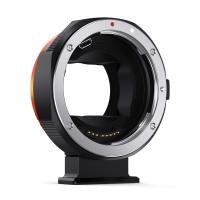How To Make A Microscope Lens ?
Making a microscope lens requires specialized knowledge and equipment. It involves grinding and polishing a piece of glass to a precise shape and size, which can be a complex and time-consuming process. The lens must also be coated with a thin layer of material to reduce reflections and improve its optical properties.
The process of making a microscope lens typically involves using a lathe to shape the glass, followed by polishing with a series of increasingly fine abrasives. The lens is then coated with a thin layer of material, such as magnesium fluoride, using a vacuum deposition process.
It is not recommended for amateurs to attempt to make their own microscope lenses, as it requires specialized knowledge and equipment. Instead, it is recommended to purchase high-quality lenses from reputable manufacturers.
1、 Materials needed for making a microscope lens

Materials needed for making a microscope lens include a glass blank, a diamond cutting tool, polishing compound, and a microscope eyepiece. The glass blank should be made of high-quality optical glass, such as borosilicate or quartz, and should be flat and free of defects. The diamond cutting tool is used to shape the glass blank into a convex lens, with the desired curvature and thickness. Polishing compound is used to smooth and refine the surface of the lens, and the microscope eyepiece is used to magnify the image produced by the lens.
To make a microscope lens, the glass blank is first cleaned and inspected for defects. The diamond cutting tool is then used to shape the glass blank into a convex lens, with the desired curvature and thickness. This process requires precision and skill, as even small variations in the shape of the lens can affect its optical properties.
Once the lens has been shaped, it is polished using a series of increasingly fine polishing compounds, until the surface is smooth and free of scratches. The final step is to attach the lens to a microscope eyepiece, which magnifies the image produced by the lens.
It is worth noting that making a microscope lens is a highly specialized skill, and requires extensive training and experience. In modern times, most microscope lenses are mass-produced using advanced manufacturing techniques, rather than being made by hand. However, there are still some individuals and organizations that specialize in making custom microscope lenses for specialized applications.
2、 Preparing the lens blank

Preparing the lens blank is the first step in making a microscope lens. The lens blank is a small piece of glass that will be shaped and polished to create the lens. The glass used for the lens blank should be of high quality and free from any impurities or defects.
To prepare the lens blank, the glass is first cut into a small, circular shape using a glass cutter. The edges of the glass are then smoothed using a fine-grit sandpaper to remove any rough edges or burrs.
Next, the glass is cleaned thoroughly to remove any dust or debris. This is important because even the smallest speck of dust can affect the quality of the final lens. The glass is typically cleaned using a mixture of distilled water and a mild detergent, followed by a rinse with distilled water and a final rinse with alcohol.
Once the glass is clean and dry, it is ready to be shaped into a lens. This is typically done using a lathe, which rotates the glass while a diamond-tipped tool is used to shape the glass into the desired curvature. The curvature of the lens will determine its magnification power.
Finally, the lens is polished using a series of increasingly fine polishing compounds until it is smooth and free from any scratches or imperfections. The final step is to coat the lens with an anti-reflective coating to improve its clarity and reduce glare.
It is worth noting that while it is possible to make a microscope lens at home, it is a highly specialized and complex process that requires a great deal of skill and precision. It is generally recommended that individuals purchase pre-made microscope lenses from reputable manufacturers rather than attempting to make their own.
3、 Grinding the lens

Grinding the lens is one of the methods used to make a microscope lens. This process involves shaping a piece of glass into a lens using a grinding wheel. The process requires a high level of precision and skill to ensure that the lens is of the correct shape and size.
To begin the process, a piece of glass is selected and cut into the desired shape. The glass is then placed on a grinding wheel, which is coated with a fine abrasive material. The grinding wheel is rotated at a high speed, and the glass is moved back and forth across the surface of the wheel. This process removes small amounts of glass from the surface of the lens, gradually shaping it into the correct curvature.
As the lens takes shape, it is important to constantly check its progress using a microscope or other measuring device. This ensures that the lens is being ground to the correct specifications and that it will function properly once it is finished.
While grinding the lens is a traditional method of making microscope lenses, there are now other methods available, such as using computer-controlled machines to shape the glass. These methods can be faster and more precise, but they also require specialized equipment and expertise.
Overall, grinding the lens remains a viable method for making microscope lenses, particularly for those who have the necessary skills and equipment.
4、 Polishing the lens

Polishing the lens is an essential step in making a microscope lens. The process involves removing any scratches or imperfections on the lens surface to ensure that it provides a clear and sharp image. To polish the lens, you will need a polishing compound, a polishing pad, and a polishing machine.
First, apply a small amount of polishing compound to the polishing pad. Then, place the lens on the pad and turn on the polishing machine. Move the lens in a circular motion over the pad, applying gentle pressure. Be sure to polish both sides of the lens.
It is important to note that the polishing process should be done carefully and slowly to avoid damaging the lens. The lens should be checked frequently to ensure that it is not overheating, as this can cause it to crack.
In recent years, there has been a growing interest in using 3D printing technology to create microscope lenses. Researchers have developed a method for printing lenses using a liquid resin that is cured by light. This method allows for the creation of lenses with complex shapes and high precision.
In conclusion, polishing the lens is a crucial step in making a microscope lens. It requires patience and attention to detail to ensure that the lens is polished correctly. With the advancement of technology, new methods for creating microscope lenses are emerging, offering exciting possibilities for the future of microscopy.







































